Norman
Allan | ||||
|
the
architecture of bone
|
||
|
well, here are some of the illustrations I was going to use to describe the structure of bone: however: here I am 25 years on from looking at this and writing about it, and...! I discover that the mineral in bone is not (strictly speaking) "piezoelectric"! Back to the drawing board! |
the collagen,
however,
is piezoelectric |
|
|
but/and let
us cut to the bone
|
bone is in
large part
made up of collagen |
|
|
The collagen
behaves as an Bone is 60%
mineral
|
||
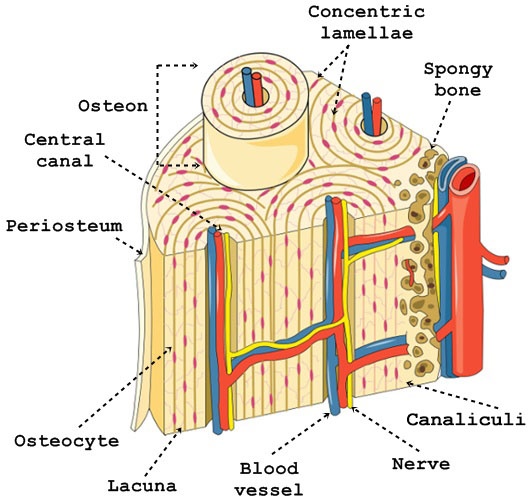 |
||
|
before 2012 it was thought
that the mineral content of bone, I am not clear about the
electrical and transductive behaviour The collagen fibers, though,
are piezoelectric! |
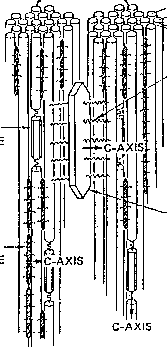 |
|
|
collagen
|
||
|
collagen,
the structural/matrix element/fibers in connective tissue, is a
protein made up of a sequence of amino acids with
glycine as every third amino acid.
|
connective tissue is made up of two main components: fibers (always some collagen and sometimes elastin fibers), and a gel-like ground substance (most notably hyaluronic acid)
|
|
 |
 |
|
 |
||
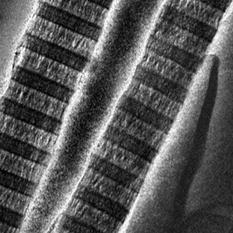 |
||
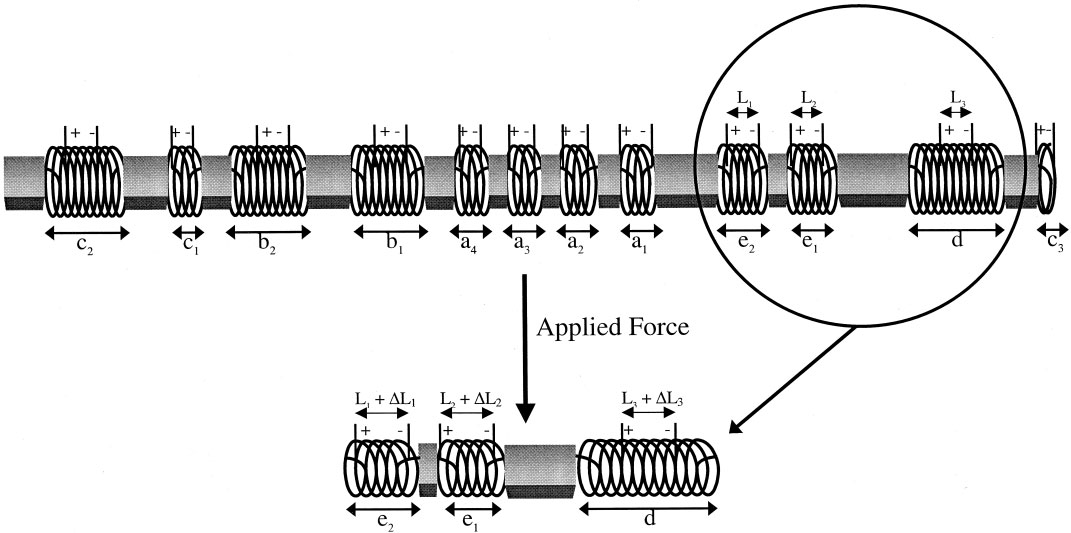 |
||
|
bone |
||
 |
||
|
(a)
(b)
(c) |
Duer: J. Magnetic Resonance 253 (2015) pp.98-110
mineral particle collagen fibril ("spatitic" a typo for apatitic [of apatite] ?) (disordered surface layer containing
water collagen fibril collagen fibril |
|
| (a) Schematic view of the current model of Duer's model of the organic-inorganic composite nanostructure of bone. Polycrystaline mineral particles, consisting of stacks of (single crystal) mineral platelets are sandwiched into the space between collagen fibrils. The large platelet (100) faces are parallel to each other and the platelet c axis is strongly ordered with the collagen fibril axis. (b) Schematic view of the structure of a single mineral platelet, with an atomically-ordered core resembling the hydroapatite structure (with substitutions) surrounded by a surface layer of disordered hydrated mineral ions. (c) Schematic view of the detailed structural model of bone mineral showing how citrate anions and water bind the mineral platelets together (and how water is involved at the mineral-collagen interface also.) | ||
|
piezoelectricity
"crystal set" gramophone
|
In biological
systems "… the reference value of the
piezoelectric effect is based on measurements of piezoelectric characteristics.
Data reported up to now show great differences between publications
(up to 4 orders of magnitude)."
"hydration"
is an important,
|
|
|
|
||
|
With reference to bone as an
piezoelectric organ which might sense e.m. field, note that:
according to Sakada:
|
||
|
the individual molecules
of collagen they have been demonstrated
in particular circumstances to show
|
||
|
|
||
 |
Feynman lectures: (with reference
to "rectangular waves") in a coaxial cable, as an oscillating
signal increases in frequency the electrical resistance rapidly falls
to zero. For a high frequency signal a coaxial cable acts as a superconductor.
|
|
|
|
||
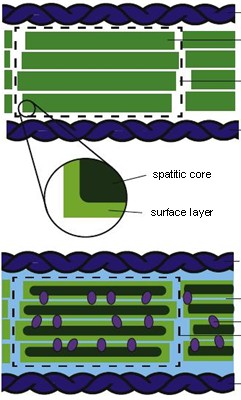 |
"…the presence
of citrate …
|
|
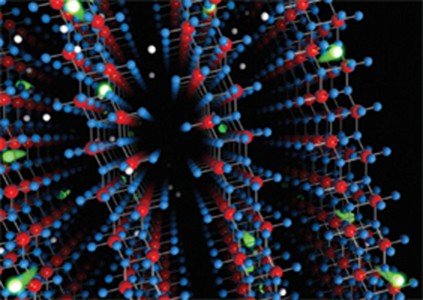 |
||
|
the net e.m.fields, gross e.m. fields are going to be zero-ish (balance/average out) - the micro fields, though, may be large (how are they broadcasting? |
||
|
Salubrious
Oscillations/
Good Vibrations |
salubrious
means healthy
|
|
|
I saw an article in June '06 that vibrations, standing on a vibrating plate, can increase bone and muscle mass! The vibrations used were 34 Hz (cycles per second) through a distance of 50 micrometers (a hair's breadth) such that the acceleration involved was a quarter of a gravity, and I wondered what order of magnitude is this? Is it comparable to thevibrations we feel in our bodies when we sing or chant?
So chanting, or singing,
might be very healthy. Might help us gain muscle and bone and lose weight.
|
||
|
Dr.
Rubin of the State University of New York "put mice on a platform
that buzzes at such a low frequency that some people cannort even feel
it.(I think the author means "amplitude".
The only frequency the article mentions in 90Hz, which is audible.)
The mice stand there for 15 minutes a day, five days a week. Afterward,
they have 27% less fat than mice that did not stand on the platform -
and dorrespondingly more bone. ... |
||
|
The thing that I find interesting here is that a relatively subtle vibration is having an appreciable (positive) effect on body metabolism and function. I am therefore wondering what the vibrational effects of chanting, OM, for instance, are? We'd need an engineer to tell us about the difference in order of magnitude between that devise and the vibrations that are set up in your body by, a) a rock band in a bar, b) by chanting, OM for instance. However, orders of magnitude might or might not be of relevance here. Subtle vibrations may be having physiological effects. One would have to look and see. Meanwhile, the safe course would be to do the chanting. It's bound to have salubrious effects at many levels (if not bone mass and muscle mass - muscles, that too was in the article). ("Salubrious" = health promoting - forgive the use of a relatively obscure word.) "Over all the bone density of the controlled group (the reporter has got this wrong - he means "experimental group" as compared to the control group) increased by 3 percent during a year, and muscle mass improved by 4 percent." So get chanting, OM (or what you fancy). |
||
|
the individual
molecules of collagen they have been
demonstrated in particular circumstances to show
they have been
demonstrated in particular circumstances to show
Microelectrode
studies of stress generated potentials in bone show that the local electrical
fields are one to two orders of magnitude (that's 10 to 100 times) higher
than estimates based on macro determination of average fields.
"…the
presence of citrate …
Feynman lectures:
(with reference to "rectangular waves") in a coaxial cable,
as an oscillating signal increases in frequency the electrical resistance
rapidly falls to zero. For a high frequency signal a coaxial cable acts
as a superconductor.
|
||